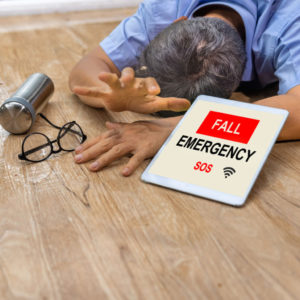Health Technologies Support Aging in Place
By Robin Bush, ISR Communications
Aging in place saves lives, provides a better quality of life, and saves money. Advances in technology are making it possible to age in place safely, support health, manage chronic diseases, augment the efforts of caregivers, and help distant family and friends stay connected.
Changing physical and cognitive issues may require adapting new levels of monitoring and support. Doctors, physical therapists, occupational therapists, and ISR’s Aging & Disability Resource Specialists can suggest helpful assistive technologies. Here are just a few:
- Personal Emergency Response Systems (PERS) are pendants designed with a push button to call help when you need it. Unfortunately, some seniors do not like to wear these because of the stigma that they need help. Studies have shown that only 7% of seniors would push the button. They were either embarrassed to need help, diminished the severity of the issue, or didn’t want adult children to find out for fear of being forced to leave their homes.
- Smartphone apps are becoming popular. Some have motion detection, and if a person falls, a responder speaks through the phone to ask, “Are you OK?” If there is no response, they place an EMS call. These can be good systems, but the drawback is the limited number of seniors who have smartphones that are charged, turned on, updated, with them all the time, and know how to use them.
- There are specialized phones for seniors without smart features, with large numbers and a red button to call for emergency help. The drawback is you need to be able to get to the phone or remember where it is.
- New devices are coming on the market that use radio waves to detect motion in a living space. These are small and discreet, and many can see through walls to cover more than one room and can track different people. They can tell if you sit down or fall, detect your breathing rate, and soon will be monitoring your heart rate. However, they aren’t yet able to track your needs if you leave home.
- Digital assistance devices (such as Amazon’s Alexa) can help track upcoming appointments or reminders to take meds. On the horizon are advances in some of these devices that will use the sound of your voice to help detect mental health conditions.
- There are smartwatches that allow you to make calls, monitor blood pressure and heart rate, have fall detection, and GPS to provide directions. And there is new research on smart garments with health status sensors that can send out a help message.
Safety in your home is only one area where technology is stepping up to meet the needs of older adults. There are technologies to magnify text or read you what is on a computer, robotic pets for emotional comfort, security alarms that monitor inside as well as outside, smart pillboxes that notify when pills are taken, and even pill robots that dispense pills and record that you took them and when.
Choosing assistive technologies is a matter of determining your needs, budget, what you are comfortable with, and what information you want to share. Most of us have paid attention to ensuring our affairs are in order; now, it is time to set up systems to help our children and friends know we are safe. It helps us, and it helps them.
This information was presented by Alfred Poor in a “Get Set Up” online class. For more Get Set Up classes, go to: www.getsetup.io.

